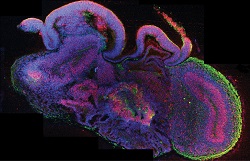Dynamic modelling for systems biology
Data-based computational models are critically important to understand complex biological systems and optimise biotechnological production processes that use engineered organisms. However, extensive expertise in code development, compilation and optimisation is required to develop non-linear models from numerous estimated parameters obtained from vast amounts of available data. Currently, models are limited in number and generally only represent steady-state conditions. Scientists require an overarching modelling framework that includes data analysis, model building, parameter estimation, uncertainty quantification and optimisation of experimental design. The EU-funded project BIOPREDYN(opens in new window) (From data to models: new bioinformatics methods and tools for data-driven predictive dynamic modelling in biotechnological applications) has developed a general modelling framework for non-experts to transfer cutting-edge data and models from academia to industry. As a collaborative network, BIOPREDYN comprised academic partners to develop the algorithms, end-users to test the software in a commercial biotechnological setting and a complex systems modelling company to develop the integrated code framework. BIOPREDYN was largely successful in developing the tools and methodologies needed to handle time- and space-dependent biological data. These techniques were applied to study complex pathways such as enzyme regulation and the level of description included metabolism, transcription, signal transduction and development. Their efforts helped produce more accurate and superior simulation results than the current state-of-the-art. The BioPreDyn software suite is freely available online on the BIOPREDYN-bench website(opens in new window). This suite includes the software tools: Path2Models, SBML qualitative models, BioServices, Cyrface, CySBGN, CellNOptR, SBGN-ML and LibSBGN as well as MIDER. Project members addressed a set of challenging parameter estimation problems to evaluate and compare methods. This includes kinetic models of the bacterium E. coli, baker's yeast S. cerevisiae, the fruit fly D. melanogaster and a generic signal transduction network. Already, the two collaborating end-users have successfully incorporated this software in their production strategies to optimise production processes. BIOPREDYN delivered a comprehensive framework for the dynamic simulation of complex biological pathways that has resulted in several publications. These tools should facilitate systems biology research and improve the profitability of associated industries. Applications also include the food, agriculture and the healthcare sector.






